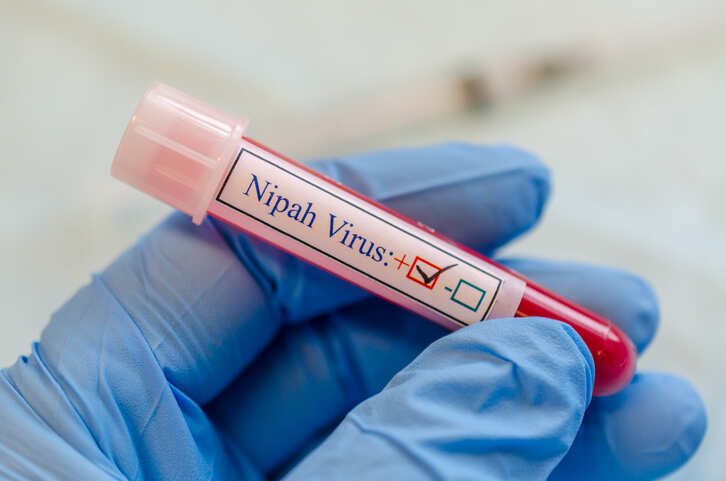- Diagnostics
- 1 min read
Nipah virus symptoms include fever, muscle pain, drowsiness; can spread through contaminated food
The interval from infection to the onset of symptoms mostly ranges from four to 14 days.
SIGNS AND SYMPTOMS:
Human infections range from asymptomatic (no symptoms) to acute respiratory infection and fatal encephalitis, involving inflammation of the brain, according to the World Health Organization (WHO).
Infected people initially develop symptoms, including fever, headaches, myalgia (muscle pain), vomiting and sore throat.
This can be followed by dizziness, drowsiness, altered consciousness, and neurological signs that indicate acute encephalitis.
The incubation period - interval from infection to the onset of symptoms - mostly ranges from four to 14 days.
Most people who survive acute encephalitis make a full recovery, but long term neurological conditions have been reported in survivors.
The WHO estimates the case fatality rate at 40 per cent to 75 per cent.
PAST OUTBREAKS:
The Nipah virus was first recognised in 1999 during an outbreak among pig farmers in Malaysia.
It was also recognised in Bangladesh in 2001, and nearly annual outbreaks have occurred in that country since. The disease has also been identified periodically in India. Last year, the virus killed 17 people in Kerala.
TRANSMISSION:
During the first recognised outbreak in Malaysia, which also affected Singapore, most human infections resulted from direct contact with sick pigs or their contaminated tissues, according to WHO.
Transmission is thought to have occurred via unprotected exposure to secretions from the pigs, or unprotected contact with the tissue of a sick animal.



COMMENTS
All Comments
By commenting, you agree to the Prohibited Content Policy
PostBy commenting, you agree to the Prohibited Content Policy
PostFind this Comment Offensive?
Choose your reason below and click on the submit button. This will alert our moderators to take actions